Stationed at Fort Missoula in Montana, the 25th rode into a few months of quasi-limelight in 1897: they accomplished their incredible feat; they were praised, and almost simultaneously relegated to obscurity as the Spanish American War and the Klondike Gold Rush became the focus of the times.
Modern day thought is that the troopers of the 25th were just “doing their job.” The experimental ride was no different than quelling Indian uprisings in the West or coming to the aid of the rough riders at El-Caney during the Spanish-American War in Cuba. Those twenty-two men were just doing their job.
We presume a lot in the modern day.
We don’t know what those men thought.
We don’t even know who all of them were.
Their leader was 2nd Lieutenant James A. Moss from Louisiana who graduated at the bottom of his class at West Point.
James Kenney, a South Carolinian, was the post surgeon who did his best to keep the detachment healthy on the mission.
Edward Boos, the only civilian, was a newspaper reporter from the Daily Missoulian and avid cyclist who went along to document the historic event.
Of the twenty other enlisted men, Mingo Saunders was the first sergeant, William Haynes and Abram Martin were lance corporals and the mechanic was Private John Findley. Privates Elwood Forman, William Haynes, Frank L. Johnson and William Proctor and bugler Elias Johnson are the only other names I could find. Eleven men, over half of the unit, remain unknown.
What was the feat they accomplished?
They rode bicycles from Fort Missoula, Montana to St. Louis, Missouri. They rode over the continental divide in Montana in driving snow and slush up to their boot tops. In Wyoming, they encountered drifts of hailstones eight feet high. They braved Nebraska’s 110 degree heat and survived alkali poisoning. Averaging over 55 miles per day, and six miles per hour, they covered 1900 miles on specially made Spaulding bicycles weighing 32 pounds each. The addition of gear pushed the weight of each bicycle to about 60 pounds. A detailed list of what each trooper carried on his bicycle can be found at Mike Higgins’ website. Forty one days after their departure from Fort Missoula, they were escorted into St. Louis by over a thousand cycling enthusiasts from the Associated Cycling Clubs of St. Louis.
Having completed such an epic journey, how can we not know who half these people were?
Simple, the 9th and 10th Cavalry and 24th and 25th Infantry were Buffalo Soldiers.
"Colored Regulars."
Below is a selection of clippings from Newspapers.com which chronicle their accomplishment. A PBS video link about these amazing men follows.
More history they didn’t teach in school.
The Historical Museum of Fort Missoula has more information and pictures about the Bicycle Corps.
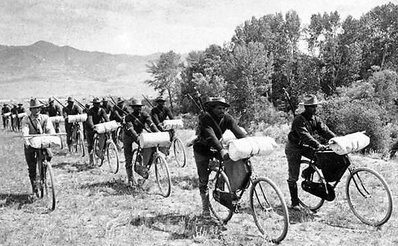
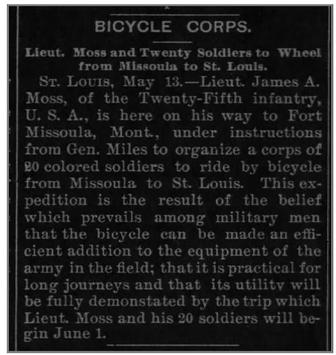
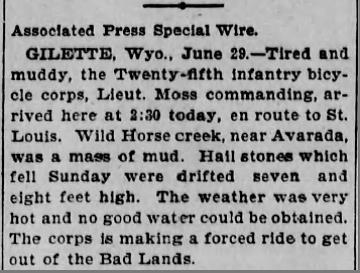
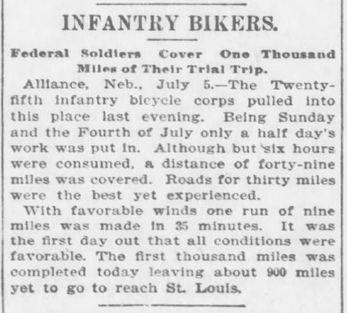
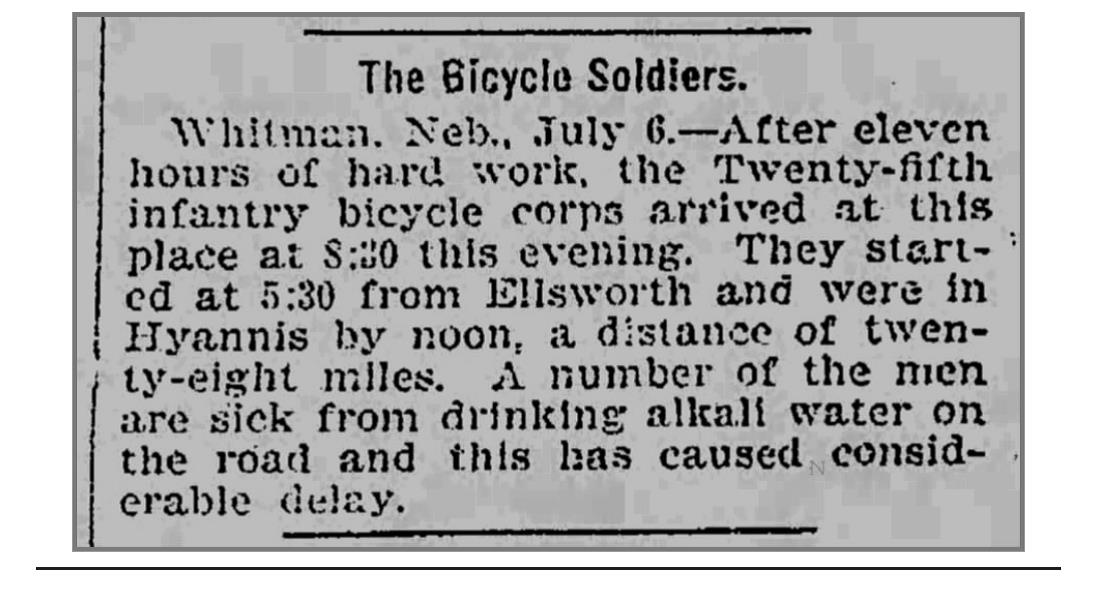
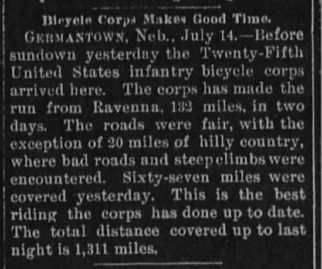
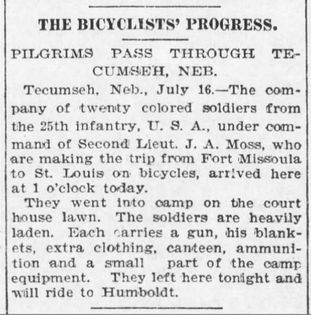
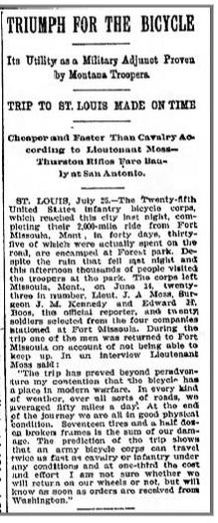

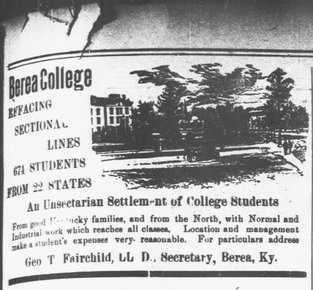
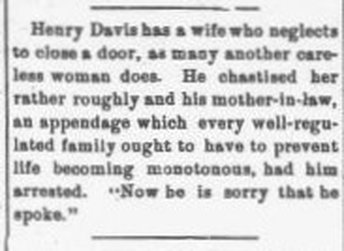

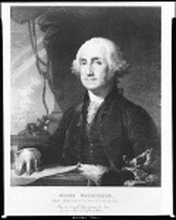
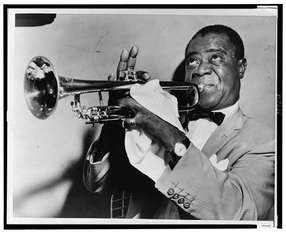
 RSS Feed
RSS Feed
